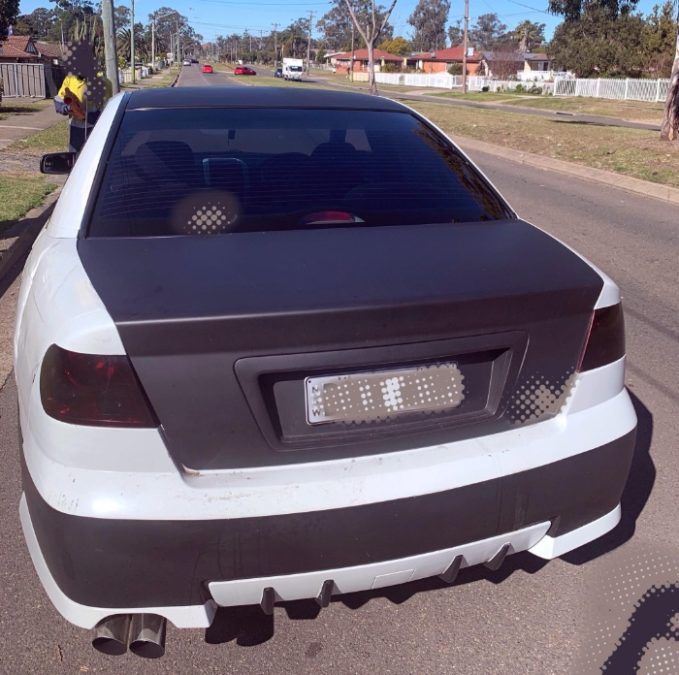This is the most hilarious car story coming in lately.
16th of July, New South Wales, Australia – Local police stopped what appears to be a Holden Commodore VZ for a random check. The officer immediately noticed the tires are severely worn with the threads completely stripped away.
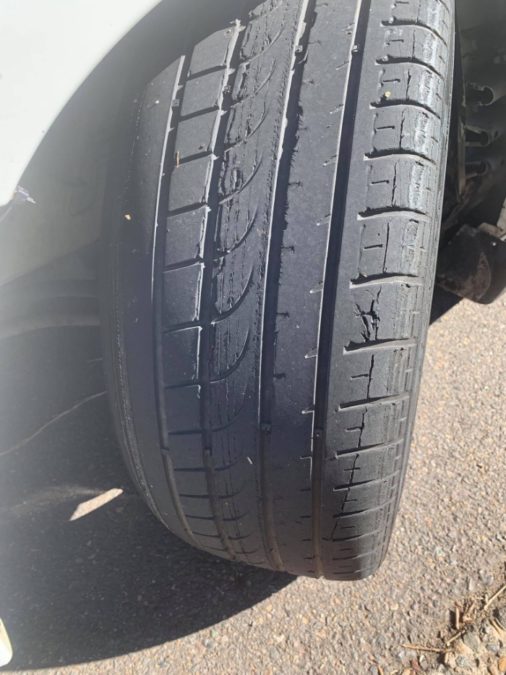
The car looks like it has a couple of modifications, so they asked the driver to pop the hood open for inspection.
Guess what they found inside – a Black and Decker garden leaf blower connected to the airbox to serve as a makeshift supercharger.
The driver admitted he installed the device to improve the engine’s performance.
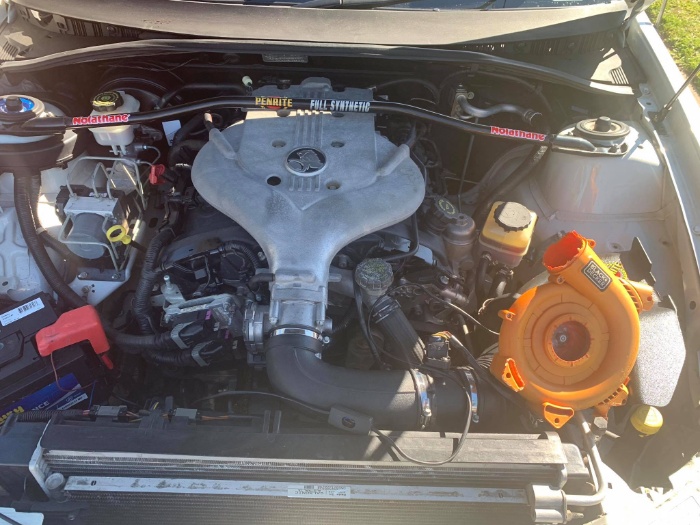
We can only imagine the face of the dumbfounded officer when he discovered what he’s dealing with. The following drug test turned positive for Methamphetamines.
This partially explains why the driver thought it was a good idea to use the leaf blower. But, the real question is:
Can you supercharge your engine with a leaf blower?
Of course, backyard mechanics have explored this idea for years, seeking a cheap way to add power to their engines. Here are some documented examples:
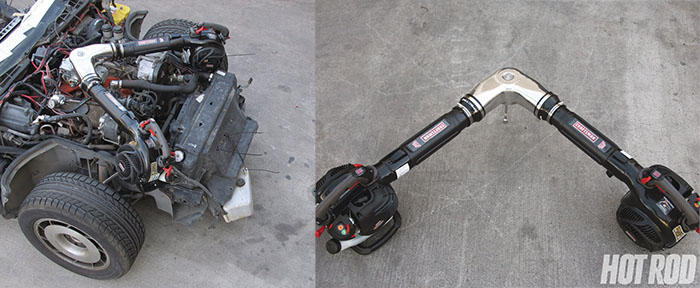
- In 2011, Hot Rod Network installed two gasoline-powered leaf blowers into the carburetor of a 1985 Corvette and managed to increase torque by 28.7 lb-ft and power by 24 hp.
- In 2012, Mighty Car Mods tested an aftermarket, battery-powered “supercharger”, which not only didn’t boost the engine, it actually took away power by restricting the airflow.
As a second test, MCM hooked up two cordless electric leaf blowers to the intake and noted an increase of 1.3 horsepower, which may well be within the dyno’s margin of error. - The most recent test was in January 2019. A few guys connected a Milwaukee leaf blower to the intake of a Toyota Tacoma and claimed there is a significant power increase. However, there is no back to back test to prove it.
Although it’s not the right way to add power to your engine, some of these experiments have real results. However, in every case, the leaf blower was connected directly to the intake of the engine.
In the Commodore, it’s connected to the air filter box, likely with the filter still installed. Furthermore, it draws power from the standard 12 Volt battery, which already powers all the electronics, spark plugs, stereo, lights, etc.
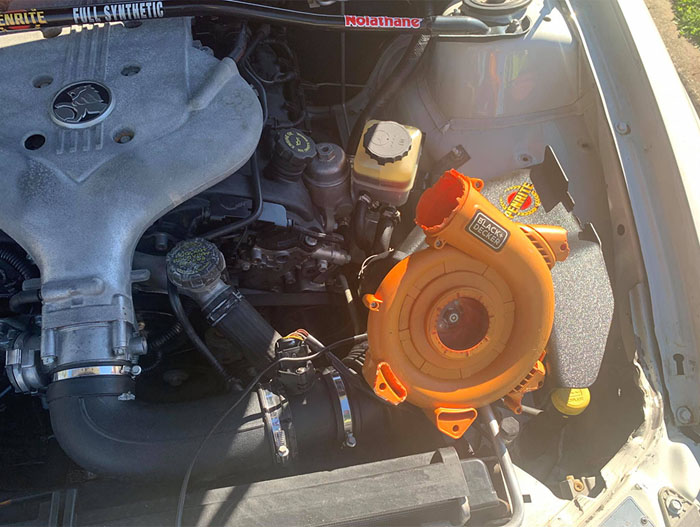
There is no way this setup would produce any additional power!
How is it different than a conventional supercharger or turbocharger?
A supercharger is an engine-driven compressor, which pumps more air into the cylinders. The fuel system is also calibrated to inject proportionally more fuel.
More air and more fuel create bigger explosions and therefore more power. Simple enough.
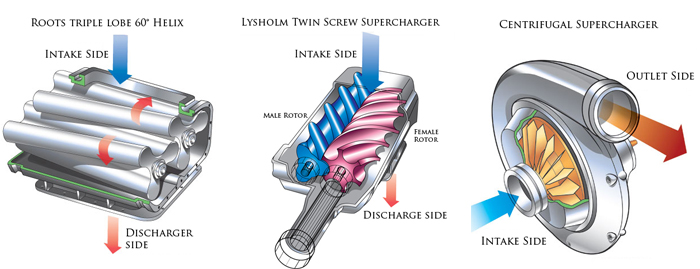
Turbochargers work in a similar fashion. The hot pressurized exhaust gasses spin a turbine, which is connected to the compressor wheel.
Each device has its pros and cons, but they are designed and machined within extremely tight tolerances.
A supercharger spins up to 50,000 RPM and a turbo can spool up to 150,000 RPM and beyond, depending on the application.
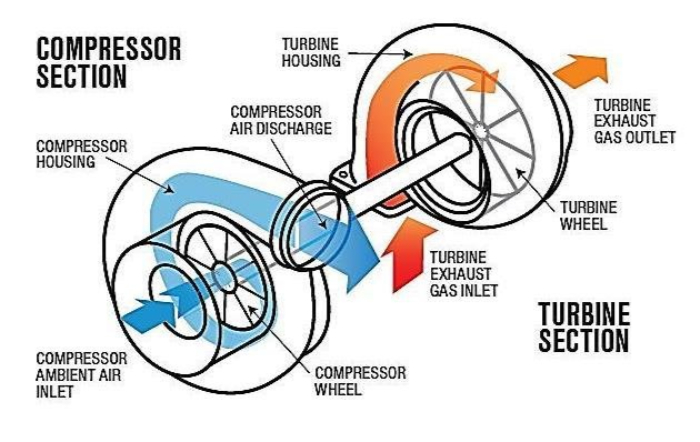
A leaf blower is just a fan. It’s designed to move air, not compress it. It can never generate the pressure needed to provide an effective boost. And even if it can, it will hardly be anything to brag about.
Finally, there is the fuel system. An engine will produce peak power at a specific air-fuel ratio. Sway too much either way and you start to lose power as well as create additional problems, like increased knock and emissions.
There are electric superchargers, but they are not bolt-ons
Audi is using this technology in their SQ7 TDI model since 2015. The 4.0-liter V8 diesel engine features a very complicated, but innovative forced induction system.
There are two sequential turbochargers, each engaging at different engine RPM. There is also an electric compressor, which spools up to 70,000 RPM within 0.25 seconds to provide an immediate boost while and eliminate turbo lag.
Unlike a homemade or aftermarket rig, the compressor is powered by a 7 kW (9.4 hp) electric motor, which runs off of a separate 48 Volt system with its own generator and battery.
Source: Traffic and Highway Patrol Command – NSW Police Force
